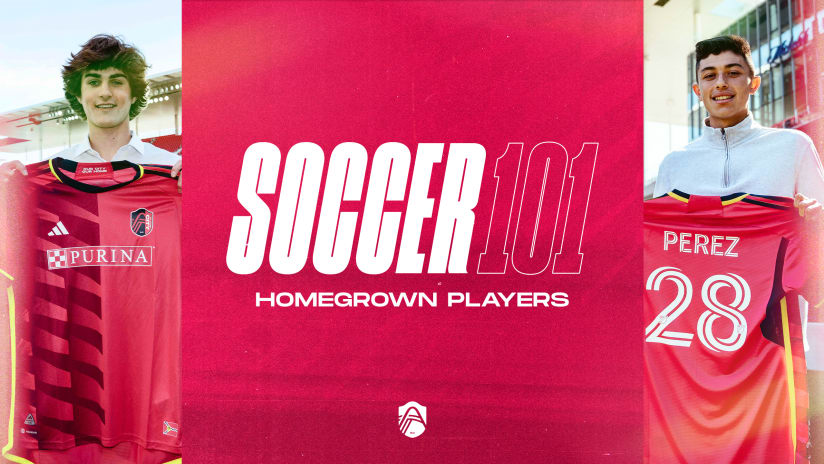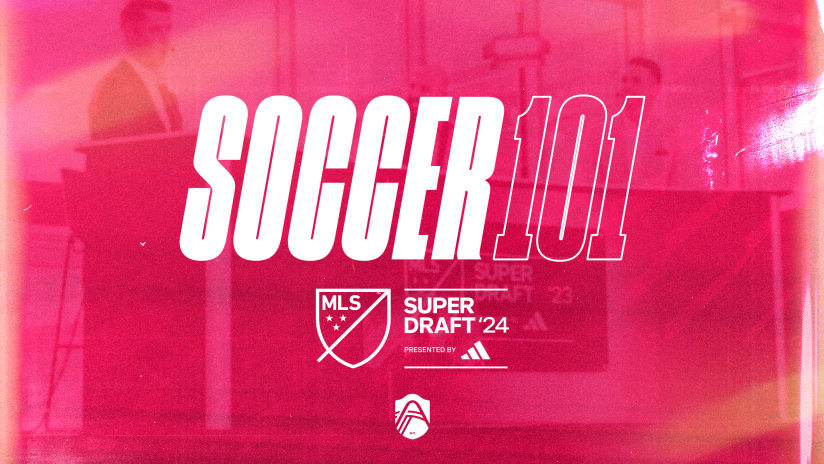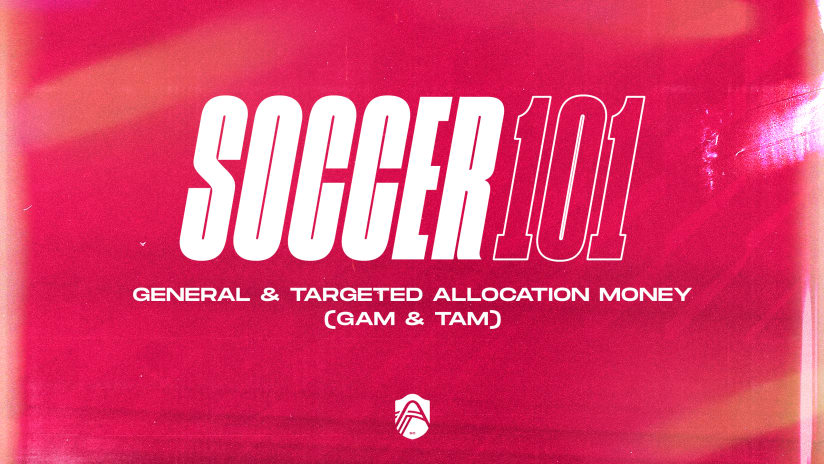Written by Zach Lowy
🇲🇽 Para leer en español, ver aquí. | 🇧🇦 Za čitanje na bosanskom, pogledajte ovdje.
St. Louis CITY SC announced the signing of Caden Glover to a five-year contract on January 9, 2023, with the U.S. Youth international forward becoming the club’s first-ever Homegrown Player. Glover, 15, developed at the Scott Gallagher Soccer Club before joining CITY Academy and appearing for CITY2 in the MLS NEXT Pro League last season, even playing in the international friendly against Bayer Leverkusen. Glover has also worked to earn his first call-up to the United States Youth National team and make three starts in four international friendlies during the Under-15 April camp.
Six weeks later, St. Louis CITY SC announced the signing of their second Homegrown Player in Miguel ‘Miggy’ Perez. Like Glover, Perez grew up in the St. Louis area and split time with CITY2 and the Academy last year. He made seven appearances in the Academy’s UPSL squad where he would score two goals in their 5-4 loss in the conference playoff semifinals, as well as making seven appearances (two starts) for CITY2. The 17-year-old midfielder has penned a contract through the 2025 MLS season with option years for 2026-27 and has since trained with the First Team, played in scrimmages and came on as a substitution in CITY’s Inaugural Season against Austin and Charlotte FC.
What is the Homegrown Player Rule?
The league launched the Homegrown Player Rule in 2008, allowing teams to sign local players from their own development academies directly to MLS first team rosters. Before the rule’s establishment, every player entering the league would have to be assigned through one of the existing MLS player allocation processes like the MLS SuperDraft. Thanks to the rule, teams can sign an unlimited amount of academy players to a first-team contract on any given year, with these Homegrown Players earning up to $125,000 above the Reserve Minimum Salary ($65,500) or the Senior Minimum Salary ($84,000) and occupying a spot on the team’s Senior or Supplemental Roster. These contracts only count against the team’s salary budget if they are registered using supplemental roster slots, but still count against the salary budget if they are registered using senior roster slots. However, there is a supplementary salary budget for teams who register Homegrown Players under senior roster slots called homegrown player funds.
What are the requirements for registering Homegrown Players?
Any Homegrown Player must have resided in that club's home territory and participated in the club's youth development system for at least one year, as well as meeting other unspecified league requirements. If a player on a team's homegrown list goes to college or U17, U20, and U23 United States men's national soccer teams, he remains eligible to sign as a Homegrown Player at any time, as long as he is registered with the club as a Homegrown Player first. Clubs may use up to $200,000 of their currently available Targeted Allocation Money to sign new Homegrown Players to their first MLS contract, subject to League review and approval. Targeted Allocation Money cannot be used on a Homegrown Player previously signed to MLS.
Are there any foreign Homegrown Players?
If the international player is a member of an MLS academy in the year before turning 16, he will count as a domestic player and will not take an international roster slot. One prominent example is Alphonso Davies, who left Ghana for Canada at five years old and made his rise through Vancouver Whitecaps’ academy, eventually earning a move to Bayern Munich and becoming a starter for the German champions and scoring Canada’s first-ever World Cup goal. Another is Carlos Salcedo, who left Mexico and joined Real Salt Lake’s academy in January 2012, spending the league-minimum one year in the youth system before signing a homegrown contract – he has since gone on to play 47 matches for the Mexican national team and currently plays for Liga MX side Juárez.
What are the long-term implications of this rule?
Since the program’s inception in 2008, some players have elected to skip years in college to play in MLS academies and sign with senior teams in the league. This has, in many ways, fast-tracked academy products for first-team action, with Seattle’s DeAndre Yedlin setting a milestone in 2014 by becoming the first MLS Homegrown player to compete in a World Cup. According to St. Louis native and former U.S. international Taylor Twellman, one of the main objectives of the rule was to “encourage investment into the local youth of the respective cities from ownership. Which would then turn into younger players that are more valuable due to the ability to sculpt players for your franchise, but also they become assets on the world market. Owners now can see the fruits of their money and investment. It's hard not to see the positives. [The consequence of the rule has been] better players at a younger age, which creates a more energetic environment around the team.” Twellman continues, “I’d argue it brought attention from the local communities to follow said players as they achieve their dreams. The best part may be that it’s brought more eyeballs from the best scouts in the world, which in turn, means other players are being seen now.”





